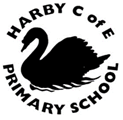Phonics
What is phonics?
Phonics refers to a method for teaching children to read and write in English. It involves connecting the sounds of spoken English with letters or groups of letters (e.g that the sound /k/ can be represented by c, k, ck or ch spellings) and teaching them to blend the sounds of letters together to produce approximate pronunciations of unknown words.
In this way, phonics enables people to use individual sounds to construct words. For example, when taught the sounds for the letters t, p, a and s, one can build up the words "tap", "pat", "pats", "taps" and "sat"
(source: www.literacytrust.org.uk)
Phonics with Little Wandle
At Harby C of E Primary School we have fidelity to one scheme and this is Little Wandle.
Little Wandle is an inclusive synthetic, whole-class phonics reading and writing programme based on Letters and Sounds, for all children learning to read and write in Foundation and Key Stage 1. It is also used as an intervention programme for children with SEN.
The alphabet contains only 26 letters. Spoken English uses about 42 sounds (phonemes). These phonemes are represented by letters (graphemes). Phonemes can be represented by a single letter (e.g. ‘s’ or ‘h’) or a group of letters (e.g. ‘th’ or ‘ear’)
Once children begin learning sounds, they are used quickly to read and spell words. Children can then see the purpose of learning sounds. For this reason, the first six letters that are taught are ‘s’, ‘a’, ‘t’, ‘p’, ‘i’, ‘n’. These can immediately be used to make a number of words such as ‘sat’, ‘pin’, ‘pat’, ‘tap’, ‘nap.’
Presentation from Phonics Parents meeting - Oct 2024
